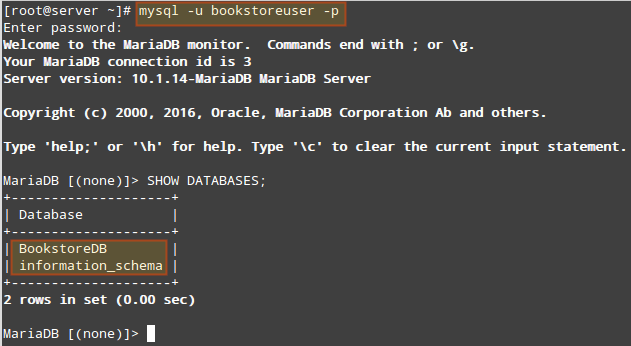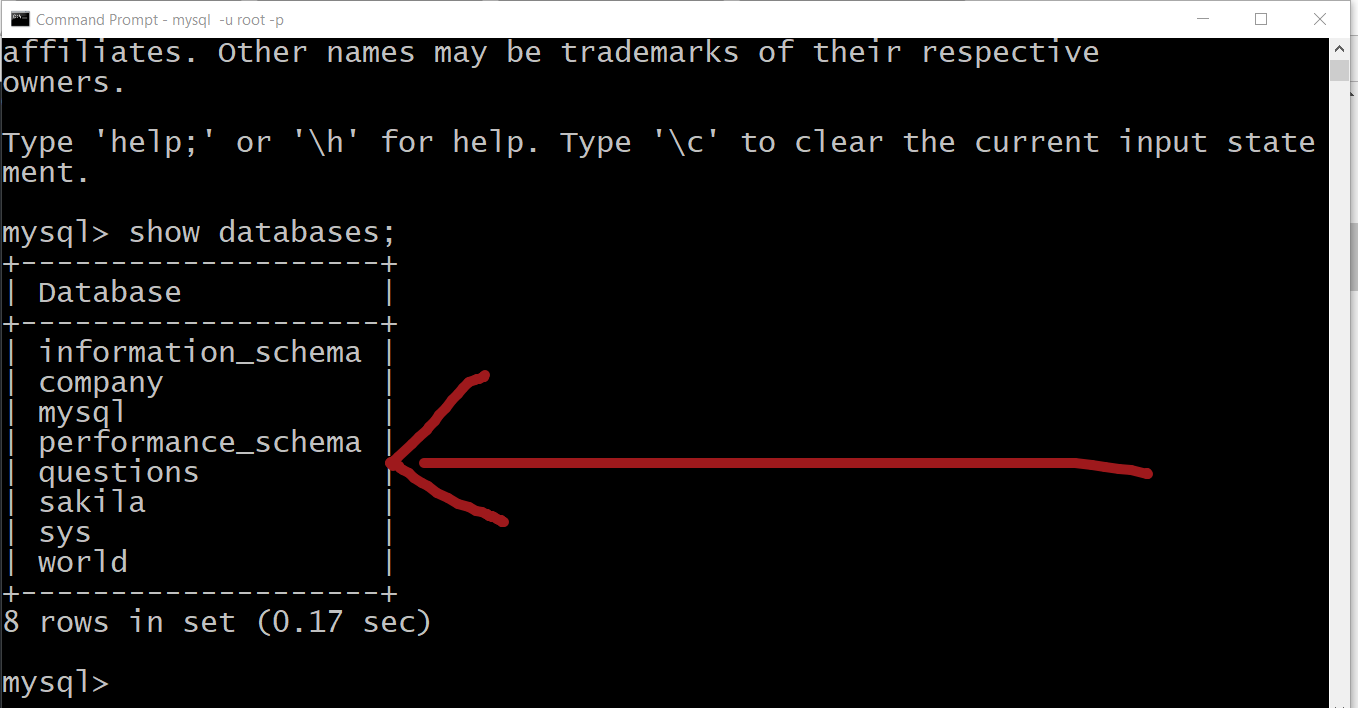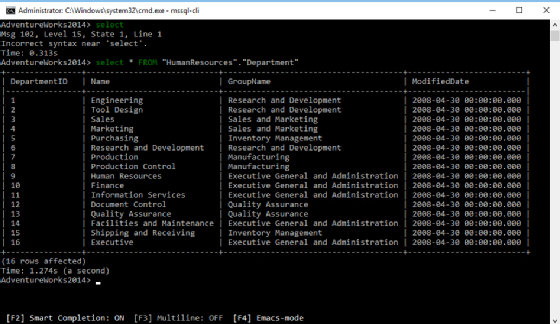
Open the Command Prompt and navigate to the bin folder of your.
Mysql show databases cli how to#
In this tutorial, you have learned how to show all databases in the MySQL server using the SHOW DATABASES command or querying from the schemata table in the information_schema database. You can also list all databases using command line. It returns the following result set: + -+ The following SELECT statement returns databases whose names end with 'schema' or 's'. A user account in MySQL consists of a user name and host name parts. If the condition in the LIKE clause is not sufficient, you can query the database information directly from the schemata table in the information_schema database.įor example, the following query returns the same result as the SHOW DATABASES command. You can even go as far as auto-compressing the output using gzip (if your DB is very big): mysqldump -u uname -p dbname gzip >. Querying database data from information_schema Starting from now, all the queries that you issue will execute in the context of the nation database.

It is important to note that if the MySQL database server started with -skip-show-database, you cannot use the SHOW DATABASES statement unless you have the SHOW DATABASES privilege. Select a database using the MySQL command-line program. If you want to query the database that matches a specific pattern, you use the LIKEclause as follows: SHOW DATABASES LIKE pattern įor example, the following statement returns database that ends with the string 'schema' SHOW DATABASES LIKE '%schema' Type the following command at the shell prompt, replacing USERNAME with your actual MySQL username: mysql -u USERNAME -p 3. This article describes how to do common MySQL database administration tasks from the command line using the mysql program. The SHOW SCHEMAS command is a synonym for SHOW DATABASES, therefore the following command returns the same result as the one above: SHOW SCHEMAS Assuming you have a database setup and running on a Linux server, here is how you can show databases in MySQL from the command line: 1. To list all databases on a MySQL server host, you use the SHOW DATABASES command as follows: SHOW DATABASES Ĭode language: SQL (Structured Query Language) ( sql )įor example, to list all database in the local MySQL database server, first login to the database server as follows: >mysql -u root -pĪnd then use the SHOW DATABASES command: mysql> SHOW DATABASES As you can see, you can show information about a lot of MySQL status information, including the number of MySQL database connections, MySQL processes, and much more.Summary: in this tutorial, you will learn how to use the MySQL SHOW DATABASES command to list all databases in a MySQL database server. I hope this brief look at the MySQL SHOW STATUS command has been helpful. Tables: 1 Open tables: 6 Queries per second avg: 0.043įinally, here are two quick links to MySQL status pages: You can show MySQL open database connections (and other database parameters) using the MySQL show status command, like this. Uptime: 4661 Threads: 1 Questions: 200 Slow queries: 0 Opens: 16 Flush | 7 | root | localhost:61706 | webapp | Sleep | 208 | | NULL |Īnd here's what it looked like after I shut Tomcat down:Īs a final note, you can also look at some MySQL variables using the mysqladmin command at the Unix/Linux command line, like this: | 6 | root | localhost:61705 | webapp | Sleep | 208 | | NULL | | 5 | root | localhost:61704 | webapp | Sleep | 208 | | NULL | | 3 | root | localhost | webapp | Query | 0 | NULL | show processlist |

| Id | User | Host | db | Command | Time | State | Info | Here's what my MySQL processlist looks like when I had my Java application actively running under Tomcat: Notice that I use like 'Conn%'in the first example to show variables that look like "Connection", then got a little wiser in my second MySQL show status query. You can show MySQL open database connections (and other database parameters) using the MySQL show status command, like this:Īll those rows and values that are printed out correspond to MySQL variables that you can look at. MySQL ‘show status’ and open database connections Sure, here’s a quick look at some work I did recently to show MySQL open database connections.

MySQL “show status” FAQ: Can you demonstrate how to use the MySQL show status command to show MySQL (and MariaDB) variables and status information, such as the number of open MySQL connections? In order to delete a database in MySQL, youll need to use the MySQL command line from your computers Command Prompt (Windows.


 0 kommentar(er)
0 kommentar(er)
